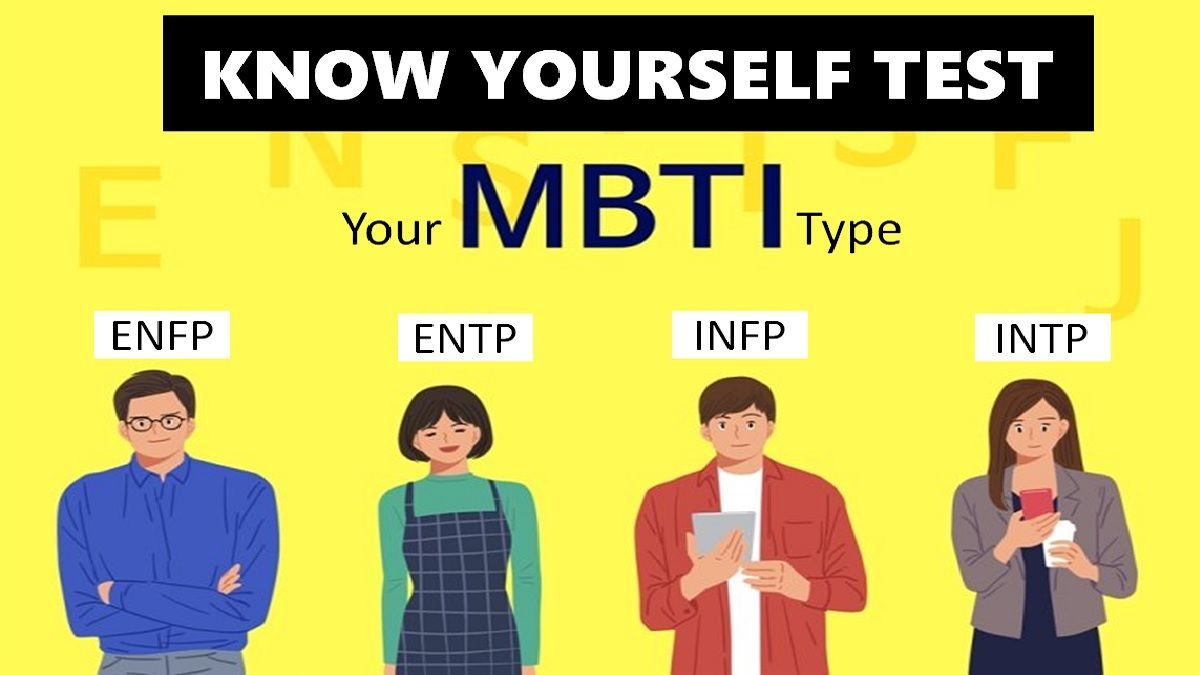
Xnxp Personality Traits and Type Tests: A Comprehensive Guide
Personality traits and type tests have fascinated psychologists, educators, and the general public for decades. These tests provide insights into individual differences, helping people understand themselves and others better. Among the various personality type indicators, the term “Xnxp” has emerged as a unique descriptor, representing a specific subset of personalities within the popular MBTI (Myers-Briggs Type Indicator) framework.
In this article, we will delve into the concept of Xnxp personality traits, explore the characteristics that define these types, and examine the role of personality type tests in identifying and understanding Xnxp individuals. By the end of this guide, you’ll have a comprehensive understanding of what it means to be an Xnxp and how personality tests can be a valuable tool for personal and professional growth.
Introduction to Xnxp Personality Types and the MBTI Framework
The MBTI framework, developed by Katharine Cook Briggs and her daughter Isabel Briggs Myers, is one of the most widely used personality assessment tools in the world. Based on Carl Jung’s theory of psychological types, the MBTI categorizes individuals into 16 distinct personality types, each represented by a four-letter code. These codes are derived from four dichotomies:
1. Extraversion (E) vs. Introversion (I)
Extraversion and Introversion describe where individuals focus their energy. Extraverts (E) are energized by social interactions, external activities, and engaging with the outer world. They often seek out social settings, enjoy group activities, and tend to be outgoing. Introverts (I), on the other hand, find energy in solitude and reflection. They prefer spending time alone or with a small group of close friends, and often focus on their inner thoughts and ideas. Introverts may appear reserved or reflective and usually enjoy deep, meaningful conversations over casual social interactions.
2. Sensing (S) vs. Intuition (N)
Sensing and Intuition relate to how individuals process information. Sensors (S) focus on concrete, practical details and prefer information that is tangible and specific. They tend to be realistic, detail-oriented, and rely on their five senses to understand the world. Intuitives (N) prefer abstract, conceptual thinking and are drawn to patterns, possibilities, and big-picture ideas. They enjoy exploring theories, imagining future scenarios, and often rely on their instincts or gut feelings. Intuitives tend to be more imaginative and future-focused, whereas Sensors are more grounded in the present.
3. Thinking (T) vs. Feeling (F)
Thinking and Feeling describe how individuals make decisions. Thinkers (T) base their decisions on logic, objective analysis, and rationality. They prioritize fairness, consistency, and are often more impersonal when solving problems. Feelers (F) make decisions based on personal values, emotions, and the impact on others. They prioritize harmony, empathy, and tend to be more compassionate and considerate of people’s feelings. Thinkers are often seen as more analytical and detached, while Feelers are viewed as empathetic and caring, valuing relationships and emotional connections.
4. Judging (J) vs. Perceiving (P)
Judging and Perceiving reflect individuals’ approach to structure in their lives. Judgers (J) prefer organization, planning, and decisiveness. They like to have things settled, make lists, and follow schedules, often seeking closure and order in their environment. Perceivers (P), on the other hand, prefer flexibility, spontaneity, and keeping options open. They enjoy going with the flow, adapting to changes, and often resist strict schedules. Perceivers are more comfortable with ambiguity and tend to be more adaptable and open to new experiences, while Judgers thrive in structured, predictable settings.
Each combination of these preferences results in a unique personality type, such as ISTJ, ENFP, or INFJ.
Also Read: Integrating Automated Testing with Manual Testing | Mobile Website Testing
Decoding the Xnxp Personality Type
The term “Xnxp” is not an official MBTI type but rather a placeholder used to represent a group of people who have a specific preference for Intuition (N) and Perceiving (P), but whose other preferences may be ambiguous or less dominant. The “X” in “Xnxp” signifies uncertainty or flexibility in the Extraversion/Introversion and Thinking/Feeling dimensions.
In other words, an Xnxp individual might lean towards either Extraversion or Introversion and Thinking or Feeling, but these traits are not as strongly expressed as their preference for Intuition and Perceiving. This makes Xnxp personalities more adaptable, open-minded, and less constrained by rigid categorizations.
Key Characteristics of Xnxp Personality
- Open-Mindedness: Xnxps are known for their ability to consider multiple perspectives. They are open to new ideas and experiences, often seeking out novelty and diversity in their lives.
- Flexibility: With their strong Perceiving preference, Xnxps are adaptable and spontaneous. They prefer to keep their options open rather than sticking to a fixed plan.
- Creativity: Intuition-driven individuals are often creative and imaginative. Xnxps excel in fields that require out-of-the-box thinking and innovation.
- Ambiguity Tolerance: Xnxps are comfortable with uncertainty and ambiguity. They don’t feel the need to have everything neatly categorized and can thrive in environments where others might struggle.
- Exploration and Curiosity: Xnxps have a natural curiosity about the world around them. They enjoy exploring new concepts, ideas, and possibilities.
The Role of Xnxp Personality Tests in Identifying Xnxp Personality Traits
Personality tests play a crucial role in helping individuals identify their personality traits, including those that fall under the Xnxp category. These tests typically involve a series of questions designed to measure an individual’s preferences across the four MBTI dimensions. The results provide a profile that highlights the dominant traits and preferences of the test-taker.
Popular Xnxp Personality Tests
- Myers-Briggs Type Indicator (MBTI): The most well-known personality test, the MBTI assesses individuals based on the four dichotomies mentioned earlier. While it typically assigns a definitive type (e.g., INFP, ENTJ), some people may receive results that suggest they are close to the midpoint on certain scales, making them more likely to identify as Xnxp.
- Big Five Personality Traits (OCEAN): This test measures personality based on five broad dimensions: Openness, Conscientiousness, Extraversion, Agreeableness, and Neuroticism. While it doesn’t align directly with the MBTI, the Openness and Flexibility aspects can provide insights into Xnxp traits.
- Enneagram: The Enneagram is another popular personality assessment tool that categorizes individuals into nine distinct types. While not directly related to the MBTI, the Enneagram can offer complementary insights, particularly regarding motivation and behavior.
- 16Personalities: This is a more modern and accessible version of the MBTI that provides a detailed personality profile based on a combination of the MBTI framework and additional factors. It offers a more nuanced view that can help individuals understand if they might fall into the Xnxp category.
4. Challenges and Strengths of Being an Xnxp
Being an Xnxp comes with its unique set of challenges and strengths. Understanding these can help Xnxps navigate their personal and professional lives more effectively.
Challenges
- Indecisiveness: Xnxps may struggle with making decisions, especially when their preferences for Extraversion/Introversion and Thinking/Feeling are not strongly defined. This can lead to analysis paralysis or difficulty in committing to a particular course of action.
- Identity Ambiguity: The lack of a clear-cut personality type can sometimes lead Xnxps to feel uncertain about their identity. They may struggle with self-definition, especially in environments that emphasize clear and consistent traits.
- Difficulty in Structured Environments: Xnxps, with their strong Perceiving preference, may find it challenging to thrive in highly structured or rigid environments that require strict adherence to rules and routines.
Strengths
- Adaptability: Xnxps are highly adaptable and can easily adjust to new situations or environments. This makes them valuable in dynamic or fast-paced settings where flexibility is key.
- Innovation and Creativity: With their strong Intuition preference, Xnxps are often at the forefront of innovation and creativity. They excel in roles that require problem-solving, brainstorming, and conceptual thinking.
- Relationship Building: Xnxps’ open-mindedness and ability to consider multiple perspectives make them excellent at building relationships. They can connect with a wide range of people and are often seen as empathetic and understanding.
- Lifelong Learners: Xnxps have an innate curiosity and love for learning. They are constantly seeking out new knowledge, skills, and experiences, making them well-suited for careers that require continuous growth and development.
5. How to Thrive as an Xnxp?
If you identify as an Xnxp, there are several strategies you can use to leverage your strengths and overcome your challenges.
Embrace Flexibility
One of the most significant advantages of being an Xnxp is your flexibility. Embrace this trait by seeking out environments and roles that allow you to explore different possibilities and adapt to changing circumstances. Avoid overly rigid structures that may stifle your creativity and spontaneity.
Develop Decision-Making Skills
While your open-mindedness is a strength, it can sometimes lead to indecisiveness. To counter this, work on developing decision-making strategies that align with your personality. For example, set clear priorities and criteria for decisions, and practice making choices quickly to avoid getting stuck in analysis paralysis.
Cultivate Self-Awareness
Given the ambiguity in your personality type, it’s essential to cultivate self-awareness. Regularly reflect on your experiences, preferences, and behaviors to gain a deeper understanding of yourself. Personality tests can be a valuable tool in this process, but don’t rely solely on them. Pay attention to how you react in different situations and what feels most authentic to you.
Seek Out Collaborative Environments
Xnxps often thrive in collaborative environments where they can exchange ideas and work with others. Seek out opportunities to collaborate, whether in professional settings, creative projects, or social activities. Your ability to connect with others and consider multiple perspectives will make you a valuable team member.
6. The Future of Xnxp Personality Type Tests and Xnxp Personality
As our understanding of human psychology continues to evolve, so too will the tools we use to assess personality. The concept of Xnxp personalities highlights the complexity and fluidity of human traits, challenging the idea that people can be neatly categorized into fixed types.
In the future, we may see the development of more nuanced personality assessments that recognize the dynamic nature of personality and offer a more individualized approach to self-understanding. For Xnxps, this could mean more tailored insights that help them navigate their unique traits and thrive in various aspects of life.
Also Read: Build a Philosophy Quote Generator with Vector Search and Astra DB (Part 3) | Email markting with Ads.xemphimon@gmail.com
Conclusion
The Xnxp personality type represents a fascinating blend of flexibility, creativity, and open-mindedness. While not officially recognized in the MBTI framework, Xnxps embody the potential for adaptability and innovation, making them well-suited for a rapidly changing world.
Understanding Xnxp traits through personality tests can provide valuable insights into your strengths and challenges, helping you make informed decisions about your personal and professional life. By embracing your unique characteristics and continuously seeking self-awareness, you can thrive as an Xnxp and unlock your full potential.
Whether you’re taking a personality test for the first time or revisiting your results, remember that these assessments are tools for self-discovery, not definitive labels. Embrace the fluidity of your personality and use it as a source of strength in your journey of growth and self-improvement.


